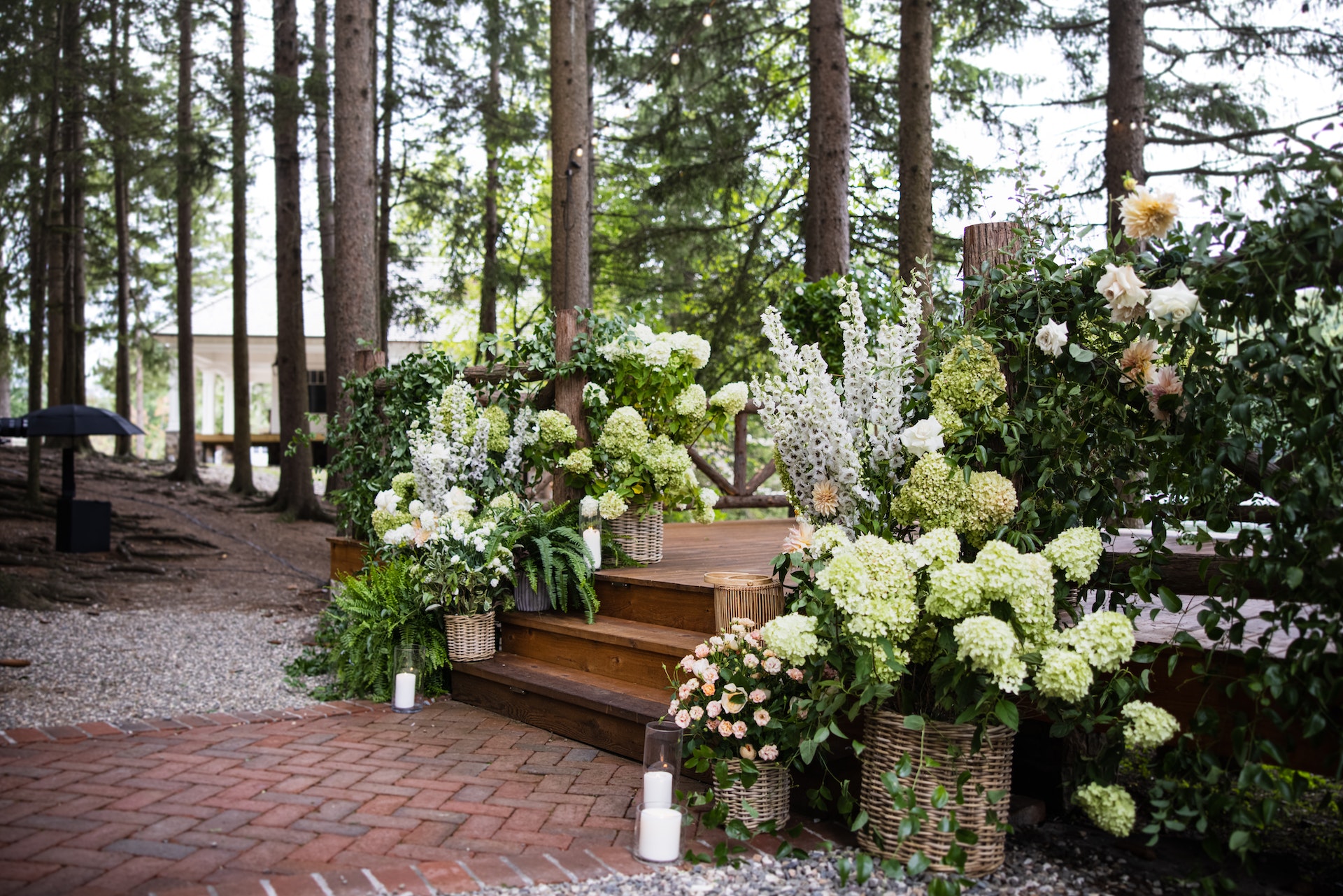Has designing the perfect yard got you stumped? We’ll show you some tips to help you develop a landscape plan to make your property the talk of the neighbourhood.
Drawing Your Yard Plan
A good starting point is to draw a plan for your yard. Keep it basic, but include things that will remain part of your landscape, like a tall tree. Make several copies or use tracing paper as you add elements to the design. On your plan, note key features of your existing landscape, like hills, which areas get sun and which get shade, and any privacy issues.
Next, think about your goals. Do you want a place for dinner parties with friends? Need an area for kids and pets to play? Or maybe just a tranquil spot to read a book on a summer day? How about a garden? Make your wish list of current and future goals.
What Are Your Goals?
Now start adding your goals to the plan. One way to start is to work big to small, adding the largest items to the plan first, such as a patio, deck, or pergola, then fill in around them. Of course, keep in mind your budget and short-term goals.
Just as you have a style when decorating your home’s interior, use style outdoors to keep the entire property cohesive. Look to your house exterior for design inspiration. A traditional house works well with a variety of landscape plans, while a modern dwelling does best with clean lines and simple plantings, such as ornamental grasses.
Ideas and Suggestions For Your Plan
Now let’s talk about some different ideas for your plan. Plants are definitely one of the most important parts of your landscape and one of the easiest ways to define a new look. Beds with clean lines define areas and points of interest, while curves tend to look more natural.
Again, think of using plants as you would decorate your house. Pick just a few colors that work together, or at least avoid lots of variation in small areas, but feel free to mix up texture and size. Layer the heights in your beds, tallest in the back, smallest upfront. Keep in mind how tall the plant will be when it’s mature so it doesn’t grow to block a window. Here’s a tip… When selecting plants, know that perennials grow back every season, while annuals will need to be planted each year.
Another tip… Plantings tend to look best when they’re in odd numbers. Now, along the house, consider using a bush or wider plant to soften the corners. However, keep large plants a few feet from the foundation to prevent damage from roots.
If privacy is a priority, consider planting hedges as a fence, or build a traditional fence. Different styles are available to fit your preference. Just check your local codes before you install. If your property has a hill, planting on the slope is a possibility, or you can use small retaining walls of various levels to define different points of interest.
Pathways to POI
Next, think about pathways to get to the different points of interest in your yard. Solid concrete, or pavers, are more formal and offer defined direction. Crushed gravel is a softer alternative. And stepping stones give a natural feel to the land.
Just be sure to space them as someone would step and use a landing every few stones to create an opportunity to stop and enjoy the view. A great way to add tranquility and a touch of nature is by adding a water feature.
A small pond installation not only looks nice, it is perfect for plants and fish. To add relaxing sounds and help mask noise, try a fountain. A statue or tabletop fountain is a nice option for small spaces.
As your landscape comes together, consider highlighting the different areas with landscape lighting… Uplights or spotlights for trees, floodlights for beds, and path lights illuminate a landscape for nighttime enjoyment.
Of course, these design principles can be used in your backyard, but also your front yard and your side yard. However, keep maintenance in mind and how much time you’ll want to spend taking care of your yard.
The Bottom Line
Now that you have your plan ready, head to your local Landscapers to find out which plants and flowers grow best in your area. And remember, the best landscaping tip of all is to do what makes you happy, and you’ll have the perfect outdoor space to enjoy.





